One-on-One with Kajitsuka Sensei
(Ohtsubo branch of Owari Line, Yagyu Shinkage Ryu)
copyright © 2015 Douglas Tong, all rights reserved
For the online version published through EJMAS, go here: One-on-One with Kajitsuka Sensei 2015
The following article is an interview with Kajitsuka Yasushi Sensei, headmaster of the Ohtsubo branch of the Owari Line of Yagyu Shinkage Ryu. Those interested in this branch of Yagyu Shinkage Ryu can consult his group’s website: Arakido
This interview focused on the topic of the Heiho Kadensho 1, the famous treatise on swordsmanship that Yagyu Munenori wrote in 1632.
Author’s note: This interview was conducted on March 16, 2015 in Toronto, Canada. I have tried to preserve what Kajitsuka Sensei told me directly as he said it, which he did in both Japanese and English. We discussed many things and if the interview seems fragmentary in places, this was due to the unfortunate circumstance of my trying to do two roles at the same time: conduct the interview and keep the conversation flowing whilst attempting to write down all that Sensei was communicating. I have added a few notes at the end to round out what I believed Sensei might have meant or to add some necessary background information to make concepts more comprehensible. Any errors in interpreting what Kajitsuka Sensei has said are entirely my own. I hope that readers will find the reading enjoyable nonetheless.
__________________________________________________________
The Heiho Kadensho
Question: What do the words “Heiho Kadensho” mean?
Sensei: Heiho means strategy. Densho means transmission, record. Ka means family.
Question: Can you tell us about the Heiho Kadensho?
Sensei: It is a summary book written for the Shogun Tokugawa Iemitsu.2 Munenori was asked by Iemitsu to write the book.
Question: So did Munenori want to write the Heiho Kadensho?
Sensei: Yes, Munenori wrote it for two purposes: First, to give to Iemitsu, as a summary book. And second, to pass it onto his descendants, as a lineage book.

One of the fighting techniques found in the Shinkage Ryu Heiho Mokuroku (scroll): a pictorial catalogue of the fighting techniques of the style
Question: Is that so?
Sensei: Yes, looking at the end portions of the book, you see suggestions and dedications. There are also moral suggestions and admonishments on how to be a good ruler. Even such things as considering where to send ministers.
Question: Is this important?
Sensei: Yes, good government is also a part of traditional martial arts study. This book was intended as inside reading.
Question: Inside reading?
Sensei: For Shinkage Ryu practitioners. They get it. The teacher-student relationship is a one-on-one relationship always. 3
If you are not a practitioner of this art, you will not understand it. Basically, Munenori is writing to his members, to Shinkage Ryu practitioners, and to his descendants. The Heiho Kadensho is a grand master plan.
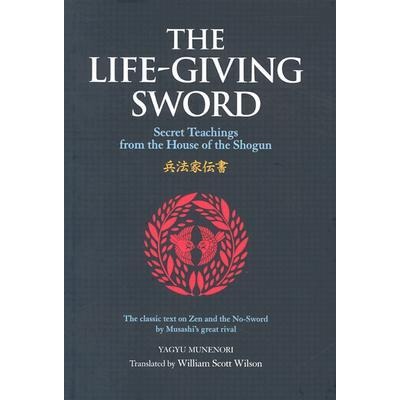
The Life-Giving Sword: a translation of the Heiho Kadensho by William Scott Wilson
Question: It is published in English and many other languages but many people find it difficult to understand. It doesn’t show specific techniques or tell us in exact terms how to fight. For example, when the opponent cuts this way, you must defend like this, etc… Why is this?
Sensei: Well, the reason was an obvious thing back then, in those days. If you publish it too widely, people will read it and then find out how to defeat you. The document was top secret. Even the knowledge that such a document exists was top secret. Like military documents today, if the other side finds out, we will lose our advantage. But as times evolved, things changed.
Question: How so?
Sensei: Well, for example, we see this today in the case of embukai.4 The modern idea of embukai was unheard of in old times. Embukai started in the Meiji Period and became more popular in the Showa Period. But even then, secret techniques were never shown. Only beginner techniques were shown.
Question: So why did embukai become popular?
Sensei: Well, the samurai disappeared, died off during the Meiji times. They lost their ability with the sword. In order for the art to survive, the art of kenjutsu, they needed to be transformed. Consequently, they turned into 3 things:
1) shows (like embukai)
2) recreational activities and sports for adults and kids (like kendo)
3) activities maintained and kept by the police
That’s how the idea of embu started.
Question: A lot of people find the Heiho Kadensho boring. It does not tell us how to fight or specifically what to do in a swordfight (i.e., in contrast to other books which are much more specific). So, what is it telling us?
Sensei: The Heiho Kaden Sho is about the philosophy of Shinkage Ryu. It was written for two reasons.
First, it was written for Shinkage Ryu practitioners, to use as a form of mental exercise.
Second, it was written for the Shogun. The Shogun never had to fight a sword battle. But for him, it was intended also as a form of mental exercise. It was intended as a way to educate the Shogun, teaching him how to embrace the way of kings. To teach him things like kingship and how to govern. How to rule was also considered as an important aspect of budo. 5
Question: The Heiho Kadensho contains a lot of talk about Zen Buddhism. Why is Zen so important in the Heiho Kadensho?
Sensei: There is a logic behind the book and this comes from Zen Buddhism. It comes from Takuan Soho’s book Fudochi Shinmyoroku.6
Munenori and Takuan were close friends. Takuan’s book was the spiritual basis of the Heiho Kadensho. You see, Zen was difficult for the common people to understand. So another part of the reason for the book was to make Zen more comprehensible to the members of Shinkage Ryu, to the high-level government officials*, and to the Shogun.
(* who were studying the style)
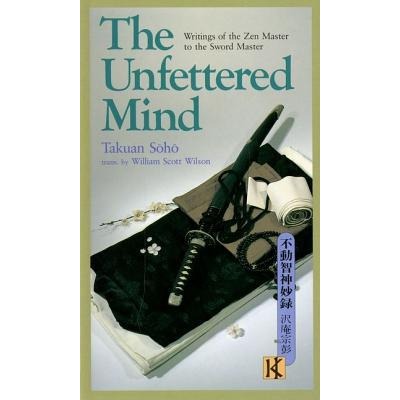
The Unfettered Mind: a translation of Takuan Soho’s Fudochi Shinmyoroku by William Scott Wilson
Question: The Heiho Kadensho talks a lot about the mind. Why is this?
Sensei: One reason is that it is important to understand the workings and movements of the mind of the opponent. Understanding this, you can defeat him.
Question: Can you explain in more detail?
Sensei: The physical body is controlled by movements of the mind. In Japanese, we say “kokoro” which means “mind” or “emotions”. For example, I have the feeling of “I want to cut”. That affects my body.
So, if you are able to maintain calm, read the opponent’s intention, then you can form a counter-plan. Basically, it is like gathering intelligence. For example, think of political situations today. Governments use their intelligence agencies to gather intelligence. Same idea.
Question: Why is this important?
Sensei: In Shinkage Ryu, anticipating your opponent is very important. Your opponent will telegraph what he is going to do. Being able to analyze this is paramount to your survival.
For the Shogun too, on a higher-level, it is important. Anticipating what the opponent will do in a sword-fight is similar to anticipating incidents on a larger-scale such as foreseeing a border clash or aggression by neighbouring states or warlords.
So, the key principle in Shinkage Ryu is to be able to read the opponent and to anticipate what he is going to do.
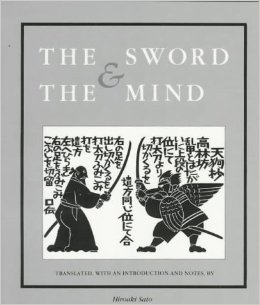
The Sword and the Mind: a translation of the Heiho Kadensho by Hiroaki Sato
Question: Thank you very much Sensei for this interview and for explaining the rationale behind the Heiho Kaden Sho.
Sensei: You’re very welcome.
__________________________________________________________
Notes:
1 Koryu Books has done a good job of reviewing the major translations of the Heiho Kadensho and considers these two as the most accurate translations of the original text as well as the best treatment of the subject matter. I tend to agree.
The Sword and the Mind (Hiroaki Sato):
http://www.koryu.com/store/swordmind.html
The Life-Giving Sword: Secret Teachings from the House of the Shogun (William Scott Wilson):
http://www.koryu.com/store/lifegivingsword.html
2 Tokugawa Iemitsu (1604 – 1651) was the third Tokugawa Shogun. He was the eldest son of the second Shogun, Tokugawa Hidetada. And he was the grandson of Tokugawa Ieyasu.
Yagyu Munenori served both Hidetada and Iemitsu.
3 This book is an accompaniment to oral tradition that Shinkage Ryu practitioners get from their interaction with their teacher. In traditional budo, instruction is one-on-one, from teacher to student, heart-to-heart.
4 Embu means demonstration. Embukai is a gathering or meeting where many demonstrations will be held, like a martial arts festival or event.
5 In this way, the Heiho Kadensho was considered a very high-level document. Many books on sword-fighting detail how to fight with swords in one-on-one scenarios. They are focused on only the technical aspects of wielding the sword. Cut this way, block this way. The Heiho Kadensho was different in that it was a book that dealt with grand-level strategy. But what it said about grand strategy could also be applied to individual fighting. For example, a certain phrase or passage on how to rule could also be interpreted as applying to individual fighting, as details on how to fight one-on-one. In effect, the Heiho Kadensho gave not only a micro-view but macro-view as well. If you think in terms of something academic like the study of economics, the Heiho Kadensho would be akin to a course that dealt with both micro-economics as well as macro-economics. A tall order indeed. Something that complex was beyond the ken of regular samurai and uneducated foot-soldiers.
6 Fudochi Shinmyoroku. In the West, it is known by the title “The Mysterious Record of Immovable Wisdom”. It was written by Takuan and given to Yagyu Munenori. In the West, it has been published as The Unfettered Mind: Writings From a Zen Master to a Master Swordsman
__________________________________________________________
Author’s post-script:
A beautiful interview; very concise but packed full of information which raises more questions than it answers. Let me elucidate upon some of the issues Kajitsuka Sensei brought up.
Zen Buddhism was a high-level language. Like in Europe, education was handled in the churches and in religion. Most of the common people could not read or write. Literacy was a pursuit for the nobility.
The Heiho Kadensho was not written for the masses. It was an internal document intended for the eyes of his clan, for high-level samurai, daimyo, and government officials (who, in some cases, were members of the Tokugawa clan or their affiliates serving in high-ranking government posts, administering and overseeing the burgeoning Tokugawa empire), and for the Shogun himself. In one instance, Munenori gave a beautifully-bound copy of the Heiho Kadensho to one of his top students, the daimyo Nabeshima Motoshige (1602-1654). Other daimyo invited Munenori’s top students to serve as their swordsmanship instructors.
Regarding the influence of Zen in swordsmanship, perhaps this excerpt provides a good and sobering outlook on how much Zen Buddhism actually influenced the martial arts of the time:
It is from these Zen writings that many people today get the mistaken idea that the samurai arts were solely influenced by Zen Buddhism and that all schools had Zen underpinnings. Yagyũ Shinkage Ryũ, through the influence of Takuan and under Munenori became fused with Zen thought, transformed into a “spiritual” practice. This Zen samurai view is one that persists today, with people assuming that the Zen influence of this one school was somehow applied to all schools. To assume that all samurai approached the study of military arts with a Zen mentality is to greatly misunderstand the wide scope of the samurai military arts, and also to belittle the very unique and unusual teachings of the Yagyũ Shinkage Ryũ.
Source: https://nisshinkankobudo.wordpress.com/2014/01/27/the-yagyu-the-sword-teachers-of-the-shogun/
One thing is certain, Takuan did have a large influence on Munenori. The Heiho Kadensho is very heavily focused on Zen. A lot of the teachings, parables, stories, and references come from Zen Buddhist thought and tradition. It is no wonder that many modern readers find the work difficult to grasp and very obtuse. I would even venture to say that the first full-scale fusion of Zen ideas with swordsmanship occurs with Munenori and this text. Other old martial arts books and manuals might have some Zen in them but not to the extent that we find in the Heiho Kadensho.
And this makes sense. Kajitsuka Sensei had said in a previous interview that before the Edo Period, swordsmanship was all about killing. Kenjutsu was quite literally techniques for killing. There’s not much spirituality in slicing someone down or hacking and slashing your way through the hordes of enemy on the battlefield.
But in the Edo Period, with the country clamped down and martial law instigated, tight restrictions came into place governing the killing of people/fellow citizens in the interests of maintaining law and order. As Kajitsuka Sensei said, “In the Edo period, the thinking evolved. It was not just a set of techniques anymore. There was a philosophy in the technique. There is a deeper meaning.”
In the Sengoku Jidai (the Warring States Period), it was just techniques for the battlefield. In the Edo Period, it became a philosophy. The Way of the Sword (Heiho no Michi) became symbolic about how to live your life, how to approach life and how to face death, spiritually and philosophically. Concepts from Zen like centeredness, no-mind, emptiness, being stuck or fixated, munen-muso, became infused into sword study as a higher-level of attainment or understanding of the principles of budo. Thus was born the concept of “Kenzen ichi” (swordsmanship and Zen become one). And it all began with Takuan Soho and Yagyu Munenori.
Regarding the Heiho Kadensho being a manual on swordsmanship. It is and it isn’t. Does it give you the nuts and bolts of how to use the sword? Well, yes and no. Readers looking for a how-to book or a book filled with pictures and descriptions of kata will be disappointed. For example, what angle do I cut? How many types of cuts are there and what do they look like? If the opponent cuts like this, how do I defeat it? Readers looking for this type of specific information on “sword-wielding” will not find it here. In Shinkage Ryu, this type of information, unfortunately, is given through oral tradition directly from a teacher. The Heiho Kaden Sho does not really deal with things at the technical level, the micro-level. It does not focus on specific techniques or what I term “sword-wielding”.
So how can it be a manual on swordsmanship? Well, it is concerned with sword-fighting rather than sword-wielding, a more macro-view of swordsmanship. It focuses on things at the next 2 higher levels: the tactical level and the strategic level. The tactical level and the strategic level are focused on the mental process, rather than the physical: analyzing, synthesizing, logic, reasoning, etc…. It focuses on the mind: your mind and the opponent’s mind.
It really begs the question: is a sword-fight concerned with only technique? Or any fight, for that matter.
I once asked this very question of Kajitsuka Sensei. He said that learning how to cut is important, yes. But more important however is knowing when and where to cut.
There are some arts out there that are great at teaching you how to cut. Beautiful technique. A dazzling array of kata on cutting. Will you learn how to cut? Yes, absolutely. And arts for test cutting too. Beautiful mechanics. Clean, precise, pristine.
But like Bruce Lee said in Enter the Dragon after Bob Wall broke the board in his face with a karate punch in an attempt to intimidate him:
“Boards don’t hit back…”
Introduce a live opponent and the landscape dramatically changes. Suddenly, “when” (timing) and “where” (distance, position) become paramount concerns. Reflect on lessons from kendo. Clean and pristine?
I will let you ponder that one.
So back to the question: does the Heiho Kadensho teach you how to fight? It does. Absolutely. But it teaches the Shinkage Ryu way to fight, which has a different focus from the usual conventional styles. Hiroaki Sato, in doing his research for his translation of the Heiho Kadensho, talked to many Yagyu scholars and Yagyu people involved in the style. He remarks that this school of swordsmanship favors being passive over aggressive, rejects offense in favour of defense, focuses on inner workings rather than outward manifestations, and discards the body in favour of the mind. As he commented, “the idea of mutō, fighting an armed opponent when you are unarmed, which the Shinkage school held to be its ultimate goal, was largely a result of its rejection in principle of the destruction of the opponent. In that sense, the Shinkage Ryu school of swordsmanship was pacifist” (Sato 1985:19).
And the Heiho Kadensho also teaches the kings and princes how to rule. A dual-layered dissertation. That is a sophisticated text.
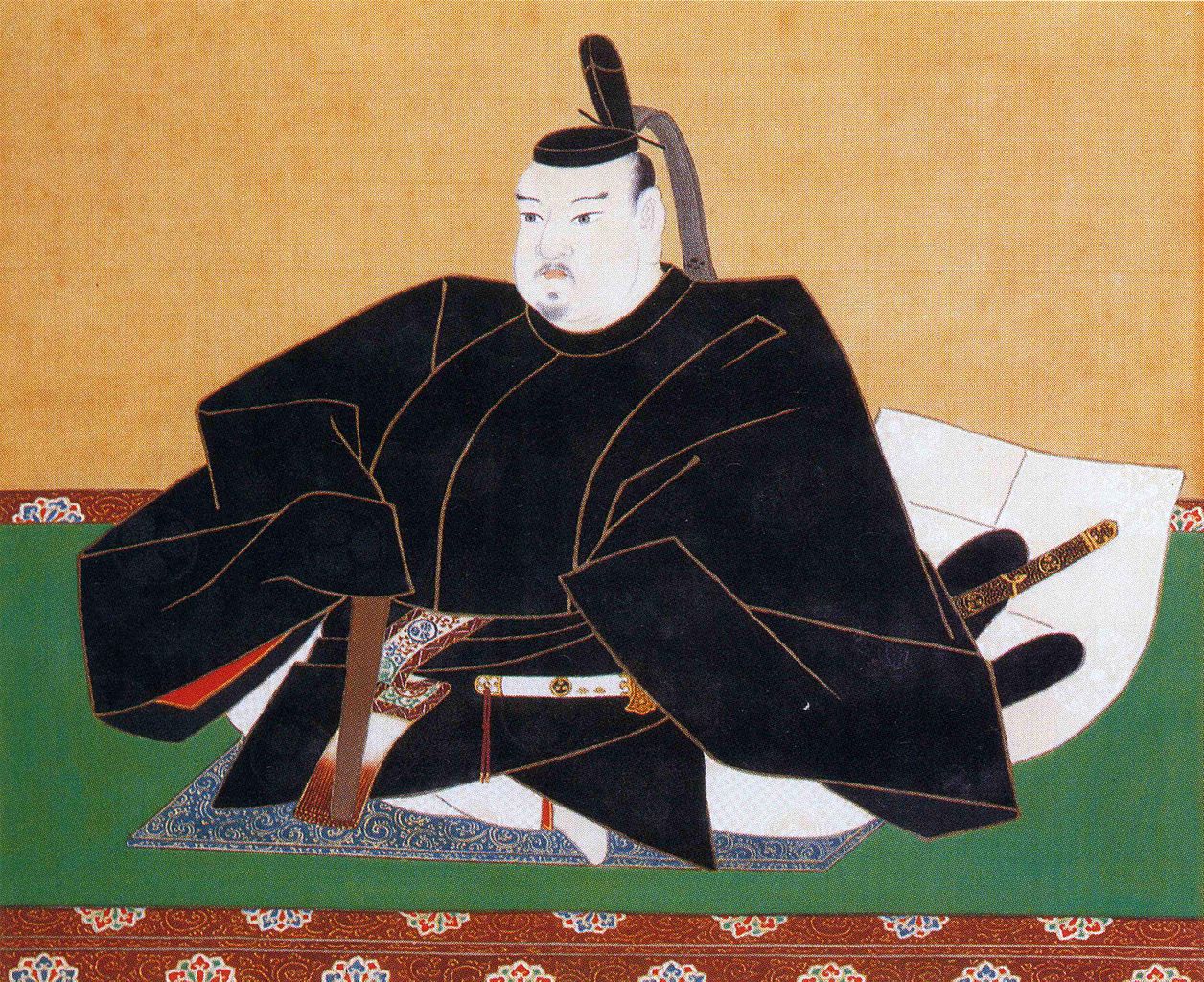 Tokugawa Iemitsu, the third Tokugawa Shogun.
Tokugawa Iemitsu, the third Tokugawa Shogun.
“But it doesn’t say anything in precise terms. It’s so difficult to understand”, some people lament. Well, the frustrating aspect of this text (which some would argue is the actual beauty and depth of the work) is that everything is couched in terms not easily understandable to the lay man. Code words are used, what the Japanese call “kakushi kotoba”. Misleading kanji (ideographs) are substituted. Information is hidden in Zen quotes, like when he references the quote of Layman P’ang admonishing us to be like a wooden figure. Or he discusses famous Buddhist verses like the one from Manura the Holy One about the shifting mind. Concepts are referred to metaphorically through analogy, like the chapter on weapons being unfortunate instruments which coincidentally was Munenori’s elucidation on Lao Tzu’s famous passage #31 from the Tao Te Ching. There is a lot of visual imagery borrowed from Zen such as when he talks about the moon on the water. In this way, the Heiho Kaden Sho is not straight-forward. It needs to be decoded. Like what the Harvard symbologist Robert Langdon had to do in the book, The DaVinci Code, to solve the mystery: cryptographic analysis. You would need to be familiar with Zen Buddhist tradition. And Chinese classics like Confucius and Sun Tzu, Mencius and Lao Tzu to make sense of it.
We need to keep in mind the circumstances in which the Heiho Kadensho was created, a situation in which you have a rival school (Ono-ha Itto Ryu) on the same premises since they are also official teachers of swordsmanship to the Shogun. Naturally, there would probably be a lot of curiosity about your rival’s style, spying going on all the time. Schools watching each other, trying to discern the other’s techniques and tactics. A manual like that falling into the wrong hands, even accidentally, was a concern. Or perhaps shown unknowingly by someone in your camp to someone from the other side (i.e., a member of a rival school or clan) or to someone with an agenda to bring down your school or your family (e.g., political enemy, rival daimyo, etc…). It makes sense that Munenori would be careful and hide things within layers of meaning so that it was not easily understandable to the lay man or an enemy who somehow happened to get his hands on a copy.
Regarding how it was designed and under what assumptions, we need to remember that the style itself, its way of doing things (i.e., cutting, moving, thinking), also influences the book: how it was written and for whom. Some sword styles were created for the masses, for the grunts and soldiers, the regular retainers and low-level samurai employed by each clan. Some styles were sold or promoted to clan chiefs and warlords as an efficient or effective way to train their cadre of retainers and foot-soldiers in basic sword-fighting, for daily defense or for battlefield fighting, depending on the type of swordsmanship style it was.
Yagyu Shinkage Ryu was not this type of style. In fact, all the kata in the style were expressly designed to defeat techniques and strategies of all the major styles of the time. Yagyu Shinkage Ryu was a style designed to defeat opposing styles. It was a style designed for elite swordsmen, high-level swordsmen, to defeat other high-level swordsmen from other styles prevalent in that time period. So the Heiho Kadensho was not a manual to train hordes of grunts on basic sword-fighting and how to kill with extreme prejudice on the battlefield. It was a manual on sword-fighting aimed at a different breed of samurai, a more sophisticated and elegant type of fighter, one who chose to suppress rather than to kill, to subdue than destroy. The cultured samurai who loves peace and whose job is to maintain it.
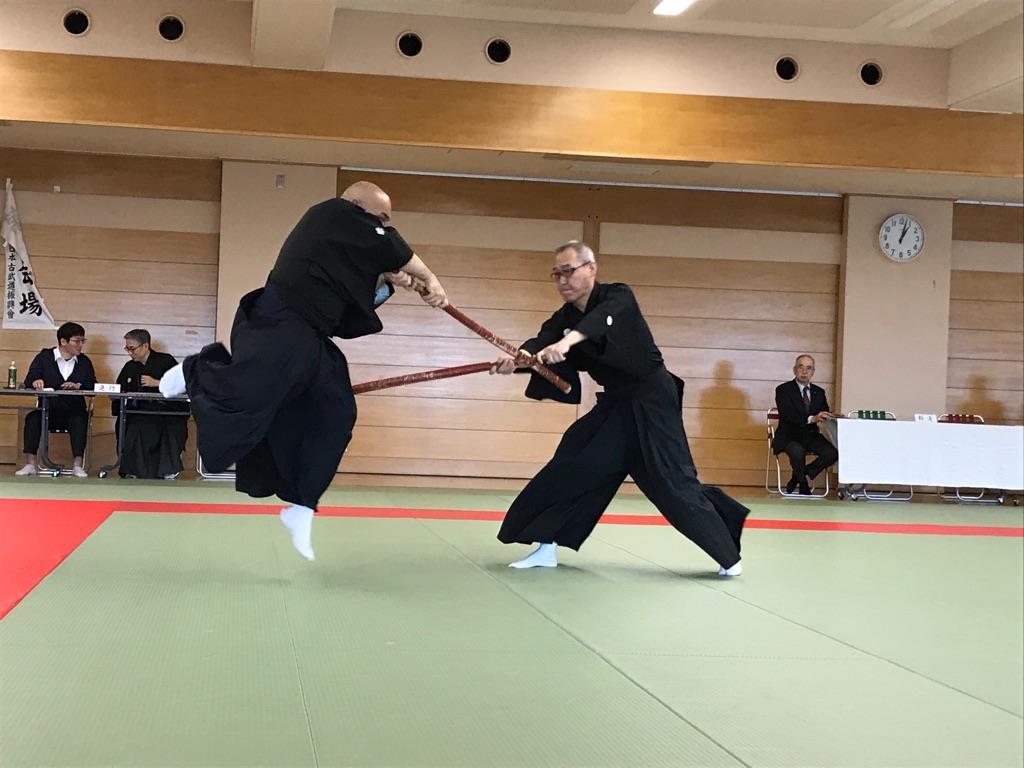 Members of Arakido demonstrate Yagyu Shinkage Ryu at the 2017 Asakusa Embutaikai in Tokyo.
Members of Arakido demonstrate Yagyu Shinkage Ryu at the 2017 Asakusa Embutaikai in Tokyo.
In that time, the early days of the Edo Period, you would need to be educated to understand it, familiar with the Chinese classics and with Zen Buddhist tradition. And in those days, because it required that the reader have that type of prior knowledge and understanding meant that the Heiho Kaden Sho, the treatise and the philosophy contained within it, was very high-level, aimed at high-class, high-ranking people, people with education.
And who were these people? Were they low-level foot-soldiers? Rank-and-file samurai? No. The style’s founder Kamiizumi Nobutsuna was a commander in the army. Yagyu Munetoshi (Munenori’s father) was the best swordsman in the Nara district and the lord/governor of a domain. Takuan Soho was the abbot of Daitokuji Temple in Kyoto and then abbot of Tokaiji Temple in Edo and an influential figure in the Rinzai School of Zen Buddhism, who had dealings with all the major swordsmen of the era like Miyamoto Musashi (Niten Ichi Ryu), Ono Tadaaki (Ono-ha Itto Ryu), and Yagyu Munenori (Yagyu Shinkage Ryu). The Yagyu’s first patron was Tokugawa Ieyasu, the new Shogun who instituted the Tokugawa Shogunate, an empire that would last 250 years. Their other patrons were Tokugawa Hidetada (the 2nd Shogun) and Iemitsu (the 3rd Shogun). And Yagyu Munenori was the sword instructor and primary advisor to these two Shoguns. Munenori was also a high-ranking government official (o-metsuke), a position akin to the Director of an intelligence agency, like CIA or FBI. Their students and supporters were other high-ranking nobles and aristocrats like daimyo. The Yagyu were minor daimyo themselves and so they dealt with that strata of society, those in power and in positions of influence. These types were not the killers. Rather, they were the ones most interested in preserving the existing order in society. If they were high-level retainers in the employ of the Tokugawa, they likely were agents of the government, there to investigate and monitor, like an old version of the FBI or Homeland Security. In their various dealings throughout the land, they may encounter situations where they would need to defend themselves. Or they might be like the police (law enforcement officers) whose job is to uphold law and order and maintain the peace. In both cases, they are the peace-keepers in society. They needed a sword style that focused on preserving life, not taking it. As the mysterious Yagyu Jubei said,
“The sword of the Shinkage school is not a yang* blade, but a yin (kage) blade. It aims not to slash, not to take, not to win, not to lose.”
(*yang: aggressive, hard, solid, fiery)
The manual and the information contained within it naturally reflected this purpose and outlook.
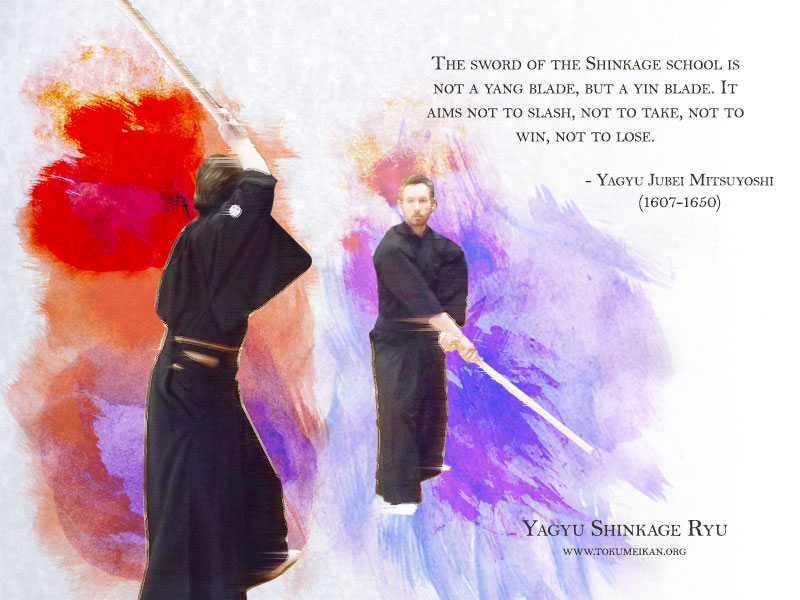
In closing, the lay reader will be disappointed by this book. It doesn’t offer much in the way of practical sword techniques that one can use. That is because it wasn’t meant for that. As well, it wasn’t meant for everyone. The Heiho Kadensho was meant only for certain eyes. It was inside information, written for the elite by the elite, a book meant only for kings and princes. The Heiho Kadensho is thus a fascinating glimpse into the training of the peacekeepers for the new era of peace and the education of a young Shogun.
